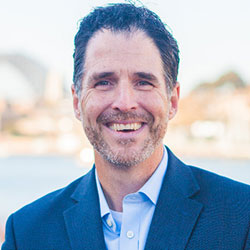In a recent poll of B2B marketers, 78% said generating high-quality leads is their biggest challenge, and 44% of marketers said generating a high volume of leads is. To help alleviate the frustration, I offer five things every marketer should know to improve lead generation.
1. Look Beyond the Top of the Funnel
Too many marketers view lead generation as an exercise in filling the top of the sales funnel. But just filling the top of the funnel is not lead generation. It’s response generation. And most “responses” don’t buy.
Marketers need to look past the response, further down the funnel. They need to begin thinking in terms of lead management, which encompasses the entire funnel from response to close of sale. By taking this holistic view of your lead-generation efforts, you’ll do more than just generate leads. You’ll manage leads, engaging with prospective buyers and nurturing them through the buying process.
To effectively manage leads, you must move from a top-of-the-funnel approach to a process-based approach. This can be achieved by adopting a process framework that consists of:
- data
- lead planning
- lead qualification
- lead routing
- lead nurturing
- a content-development process
- metrics
Using a process-based approach will improve the number of qualified leads that get sent to sales. In turn, sales will increase conversions. Together, marketing and sales will have a direct impact on corporate revenue.
2. Lead Generation Is More Than a Marketing Tactic
Lead generation is not a tactical exercise. It’s a holistic strategy. In his Propelling Brands blog, Adam Needles discussed this point by saying, “So I put a stake in the sand with this post---asserting my belief that demand generation is a strategic activity; that it is, in fact, the charter of B2B marketing; and that it spans and should be defined in terms of our holistic interaction with buyers throughout their buying life cycles.”
I couldn’t agree more with his assessment. If lead generation does indeed span the buying life cycle, then marketing isn’t the only entity that should be involved. Sales must be part of developing the strategy.
As I mentioned earlier, lead generation is about managing the entire funnel, which includes passing leads to sales and helping them to close more deals. By gathering sales’ input and collaborating with them on lead-generation strategy, you will ensure that you are working towards a common goal with sales (this is the “lead-planning” component mentioned above) and that sales will be receptive of marketing generated leads. This approach will lead to shorter sales cycles and greater effectiveness for both marketing and sales.
By shifting the thought from tactical to strategic, lead generation will take on a whole new meaning in your organization, one that will start of yielding much better results.
3. Technology Won’t Solve Your Problem
Marketers are increasingly turning to marketing automation in hopes of improving their lead-generation efficiency and effectiveness. However, marketers need to understand that technology alone will not solve their lead-generation challenges. Why? Because automation only automates what’s already there. It doesn’t create anything. Using an automation technology will not create a lead-generation plan or develop a strategy.
To make automation work effectively, first develop a strategy that consists of:
- the right people
- process (as mentioned above)
- relevant content
These three components can then be enabled by automation technology leading to exponential improvement in lead-generation results.
4. It Doesn’t Stop Once You Have a Customer
Building a successful marriage doesn’t stop once you say, “I do.” In the same way, managing the dialogue with buyers doesn’t stop once they buy. Ongoing communication and engagement with customers is crucial. It should be a significant part of your demand-generation strategy. If you want to quickly improve the revenue results from your lead-generation plans, you should be sure to look at your current customer base as a key target segment.
5. Take an Integrated Approach
As marketing automation has increased in adoption, so has B2B marketers’ love affair with email. While email is certainly an effective medium for lead generation, it’s not the only one. The best results will come from using an integrated multi-channel approach. Research has indicated that buyers (both prospects and customers) will respond to and want to receive information in a variety of ways. Therefore an integrated approach will yield the best results. There are naysayers that claim direct mail and teleservices are dead. But these and other channels (social, web and live events, etc.) should not be used exclusively either. They should be incorporated as one of many media in your lead generation campaigns. Make sure to constantly test to determine the best mix of media, as well as the best response by medium. This process is not a one-time exercise. It’s part of an ongoing, dynamic strategy.
The landscape of B2B marketing has changed and continues to change. The focus is now generating quality leads and engaging buyers in meaningful dialogue. By looking beyond the top of the funnel, adopting a strategic mindset, and using resources effectively, organizations can transform lead generation results to greatly improve their impact on revenue.
Want to get to know more about how to recharge and manage your lead-generation process? Check out our free virtual conference, Digital Marketing World, this Friday.




